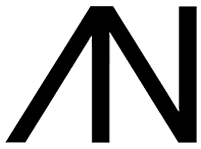Employee
Risk Management Procedure
73. Risk Management Procedure
73.1. The purpose of this procedure is to establish a systematic approach to identifying, assessing, managing, and monitoring risks within Architecture North Ltd.
73.1.1. Effective risk management helps protect our people, projects, clients, reputation, and business operations.
73.2. This procedure applies to all employees, contractors, and project teams.
73.2.1. It covers all activities, including office operations, client projects, site visits, and digital systems.
73.3. Architecture North Ltd is committed to:
73.3.1. Identifying and evaluating risks in a timely manner.
73.3.2. Implementing measures to reduce or eliminate risks where possible.
73.3.3. Encouraging a proactive risk-aware culture among employees.
73.3.4. Monitoring and reviewing risks continuously to ensure effective management.
73.4. Employees and project teams should identify potential risks that could affect:
73.4.1. Health and safety of staff, clients, or contractors
73.4.2. Project quality, schedule, or budget
73.4.3. Legal, regulatory, or contractual compliance
73.4.4. Data security and confidentiality
73.4.5. Reputation and business continuity
73.5. For each identified risk, consider:
73.5.1. Likelihood of occurrence (Low / Medium / High)
73.5.2. Potential impact (Minor / Moderate / Major)
73.5.3. Overall risk rating = Likelihood × Impact
73.6. Decide on appropriate actions to mitigate, transfer, accept, or avoid each risk. Common strategies include:
73.6.1. Implementing safety measures or operational controls.
73.6.2. Assigning responsibilities for risk management.
73.6.3. Creating contingency plans for high-priority risks
73.6.4. Purchasing insurance where appropriate
73.7. Employees are expected to:
73.7.1. Regularly review risk assessments and mitigation actions.
73.7.2. Update the risk register for any changes in project scope, regulations, or operations.
73.7.3. Report significant risks or incidents to management immediately.
73.8. All Employees must:
73.8.1. Identify and report risks in their work area or projects.
73.8.2. Follow risk mitigation procedures and safety protocols.
73.9. Management is expected to:
73.9.1. Ensure team members understand risks and controls.
73.9.2. Oversee risk management across the Company.
73.9.3. Allocate resources to manage significant risks.
73.9.4. Review and approve risk management procedures regularly.
73.10. Risks, near misses, and incidents should be reported directly to your line manager.
73.10.1. Urgent or high-impact risks must be escalated immediately.
73.10.2. Lessons learned from incidents and audits should inform updates to risk management practices.
